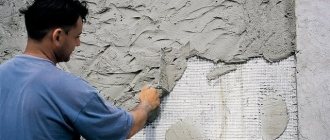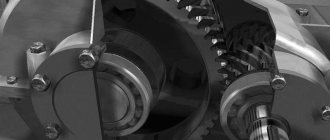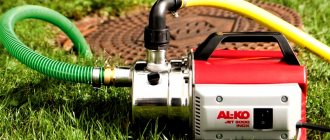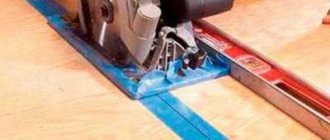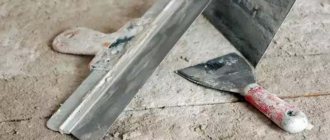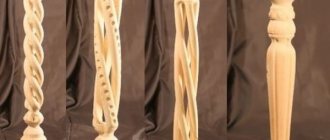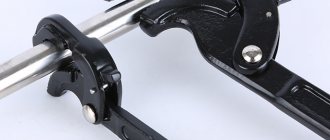Hands from the right place | 05/14/2016
The most common tools when carrying out construction, painting and other types of work are spatulas. The largest group among them are spatulas for puttying walls. They often differ in standard sizes and shapes necessary for specific work.
Purpose of spatulas
The tool is intended for:
- Removing walls and ceilings from remnants of wallpaper, paint, plaster
- Application of cement;
- Grouting joints of tiles or brickwork;
- Leveling surfaces using putty;
- Removing small flaws from wallpaper or laminate.
Depending on the chosen role, the spatula can be made of different materials and have different shapes. The more accurately the required tool is selected, the prettier the result of its use will look.
Main manufacturers
You can purchase a spatula from different manufacturers, but the following European brands are in greatest demand:
Among domestic manufacturers, the Zubr trademark has proven itself well. All of these manufacturers produce high quality tools and provide a guarantee on their products.
Today, the market offers a wide range of spatulas for puttying walls, and each person decides which tool to choose individually. You should not buy an unknown model at a low price, since the quality of the tool will determine how durable the repair will be.
Source
Types of spatulas by purpose
The entire variety of spatulas can be divided into several groups:
- Painting;
- Facade;
- Angular;
- Gear models.
Figured specimens occupy a special place.
Painting spatulas
Painting modifications are used for finishing vertical and horizontal surfaces. Such models will cope perfectly with:
- Sealing cracks;
- Filling potholes;
- Creating unusual shapes for walls or ceilings.
They will become wonderful assistants when working with putty or plaster indoors.
Heavier mixtures are not used with paint spatulas due to the low edge height. Heavy concrete can break or bend a fairly soft blade.
Painting spatulas, in turn, are divided into several subtypes:
- To prepare the walls, fairly wide tools with an edge of 20 to 35 centimeters are used, allowing one to process a significant area in one go. It is better to complement such solid spatulas with narrower models about 15 centimeters wide. They are much more convenient for extracting solutions from buckets and other similar containers and distributing them on the surface of a large tool.
- Narrow painting spatulas are used when working in hard-to-reach places, for example, under the windowsill, near door jambs, in the corners of the room.
Facade spatulas
Facade spatulas are not very different in appearance from previous models. But they have a more dense structure and a hard edge, which helps them withstand a large mass of building materials.
The exterior of a building is usually not particularly demanding on the beauty and evenness of the walls, so façade spatulas have a large working surface area. The edge grip ranges from 30 to 60 centimeters.
Facade models can also be used in interior spaces. Usually they are used to give the walls additional smoothness.
Angle spatulas
Corner views are designed for decorating internal or external corners of a room. But still, spatulas for interior decoration are more popular.
A specific tool requires special skills, so it is not a fact that a novice finisher will be able to create perfectly even corners. In addition, it is recommended to carry out work from top to bottom, without lifting the spatula from the surface, which in itself seems to be a rather problematic undertaking.
Notched spatulas
Another highly specialized type is a gear tool.
It is intended for processing textured plaster, as well as for distributing glue under stone, tiles, mosaics, and foam. The smaller the tooth size, the smaller the tile size it is intended for.
conclusions
A spatula is a necessary and useful tool, and having several spatulas on hand is a must. If repairs are not your main activity, and housework occurs occasionally, then we recommend purchasing a set of three painting spatulas; you can also buy one façade spatula. This set will be quite sufficient. If you decide to do the repairs yourself, then it makes sense to think about 2-3 more spatulas of different types, depending on the upcoming work.
Spatula material
The materials used to make the working part of the spatulas are metal, rubber, and plastic.
Metal
Stainless steel will last as long as possible, regardless of the severity of the building mixtures. But when choosing such a spatula, you need to pay attention to the thickness of the working surface: an edge that is too thin can bend under the weight of the material, deteriorating the quality of the work.
Using metal equipment you can:
- Any types of leveling and leveling work;
- Remove old layers of finishing;
- Apply adhesives.
Spring steel, which is not subject to deformation, is becoming increasingly popular.
Rubber
Rubber models are used to apply fine finishes and grouts. Soft rubber tools are useful for smoothing wallpaper and applying grout products.
This material has the following pleasant qualities:
- Soft impact on the material;
- No scratches on the finishing material;
- Repeating a given surface shape;
- A variety of working surface shapes.
Plastic
Plastic products will help at the final stage of treating walls with soft plaster or for leveling wallpaper.
The flexible material will perfectly remove bubbles and get rid of excess glue under the canvases. But you shouldn't expect more from him.
The advantages of plastic are:
- Low cost;
- A light weight;
- Variety of work surface shapes.
Rating
There are both Russian and foreign manufacturers on the spatula market. New models appear constantly, but their structure largely remains the same.
Among the popular companies that produce spatulas are:
- Stayer.
- Cedar Pro.
- Santool.
- Hammer.
- Inforce, etc.
STAYER MASTER 10041-10
STAYER MASTER 10041-10 is equipped with a blade 100 millimeters wide. The blade is made of stainless steel, which increases the service life of the tool. There are no teeth on the blade, which ensures smooth sliding of the spatula over the surface. The two-component handle fits comfortably in the hand while working. The weight of the model is 100 grams.
Valery
Spatel bought it to replace an ancient Soviet model that had become rusty. They are comfortable to work with - the hard blade is easy to clean and does not deform.
Alexey
Instrument does an excellent job with his direct task - putty and plaster. Does not get stuck in the material and washes well.
TOPEX 18B604
TOPEX 18B604 is designed for distributing construction mixtures and cleaning dirty surfaces. All TOPEX products are manufactured in Poland. The tool includes two parts - a stainless steel blade and a two-component handle with an anti-slip coating. The blade width is 40 millimeters. The weight of the model is 90 grams.
Ivan
Spatel is comfortable to hold even without gloves, which happens quite rarely. Forward and reverse grips are equally good. I bought a tool for the brigade and did not regret it.
Nikolay
I bought a spatula for home repairs. The tool is ideal for small jobs. The metal plate is not scratched or stuck.
Top Tools 18B303
Top Tools 18B303 is used for repair and finishing work. It is used in the process of applying gypsum mortar or cleaning surfaces. The tool is equipped with a 30mm blade. The handle is made of wood and the blade is made of metal. The homeland of the brand is Poland, but the products themselves are manufactured in China. The weight of the model is 30 grams.
Pavel
was looking for the most inexpensive spatula for filling the heads of self-tapping screws in drywall and settled on Top Tools. The putty consumption with this tool was moderate, which was important for me.
Denis
Spatula is well suited for driving putty into seams. Due to its small size, it fits into any gap without any extra effort.
SANTOOL 60 mm
SANTOOL 60 mm is designed for applying, leveling and smoothing putty layers. The handle of the tool is made of wood and fits comfortably in the hand due to its ergonomic shape. The varnish coating gives it a smooth finish. The width of the toothless blade is 60 millimeters. The blade is made of steel and is not subject to rust. The weight of the model is 40 grams.
Konstantin
It is convenient to work with a spatula - the blade does not bend under pressure, and the tool itself does not play in the hand. I came across this manufacturer by accident and am completely pleased with the result.
Alexander
I bought a spatula for less than 100 rubles and did not expect much from it. The advantage is the stainless steel fabric. I couldn’t make friends with the tool’s handle—it kept slipping.
FIT 06687
FIT 06687 was developed for applying mortars, sealing seams and cracks. The 125mm stainless steel blade easily distributes any material without getting bogged down. The handle is covered with rubber to prevent slipping in the hand. The two-component handle material allows you to use the tool for a long time. The weight of the model is 120 grams.
Vasily
Inexpensive spatula with average strength. Suitable for home work, but nothing more. An uneven work surface may leave marks.
Vitaly
Spatel is easy to use and does not raise any complaints regarding the quality of work. The only problem with the tool is that it is difficult to wash the handle. In the end there are still stains on it.
HAMMER 238-012
The Hammer Flex 238-012 notched trowel is used for distributing adhesives during the installation of tiles, porcelain tiles and facing stones. The blade is made of spring steel with anti-corrosion coating. The width of the blade is 150 millimeters. The size of the tool tooth is 6x6 millimeters. The handle is made of plastic, painted black. The weight of the model is 100 grams.
Arseny
Thanks to the wide base, the spatula holds a lot of solution. During operation, the surface does not bend.
Vladimir
The smooth, even canvas distributes the glue well. The only thing that bothered me was the presence of dents on the handle. Because of them, the tool is not very convenient to work with.
Inforce 020605-080-300
The Inforce 020605-080-300 notched trowel is used when laying tiles - to distribute and level the working mixture. The 300mm blade is made from cold-worked stainless steel for long-lasting use. The size of the teeth is 10x10 millimeters. The ergonomic plastic handle fits comfortably in the hand and lightens the weight of the tool. The weight of the model is 17 grams.
Mikhail
Despite the low price, the spatula performs well in use. The steel does not bend, the teeth are sharp and do not become dull after a couple of uses.
Vadim
took a spatula to lay floor tiles. The tool was worth the expense - with its help I was able to lay 20 square meters of porcelain stoneware.
Each spatula is designed for a specific type of work. The tool is selected based on several parameters. The surface area, the material being processed and the tasks are taken into account. When buying a spatula, the master pays attention to the shape of the plate, the materials from which it is made and the shape of the handle.
Shape of the working edge of the spatula
The working surface can be:
- Plate (used for leveling large surfaces and is especially popular);
- Wedge (used for working in hard-to-reach places or sealing small cracks);
- Teeth (used for applying adhesive compositions).
Curly spatulas are used to apply unusual designs on wet plaster. Most often, such patterns become imitation of brickwork or wood pattern, Venetian plaster or bark beetle finishing.
Handle material
A correctly selected pen has a positive effect on the quality and speed of work.
For its manufacture it is used:
- Tree. Light and pleasant material fits well in the hand, is not afraid of heat and cold, and maintains a comfortable temperature. But over time it can crack. To increase its service life, the wood is subjected to additional painting or varnishing.
- Plastic. It has a calm attitude towards water and temperature, and serves a long and happy life. But when using low-quality plastic, it does not have a long service life and can crumble and break.
- Metal. It does not bend or break, but has high thermal conductivity, so it can burn your hands when working in the sun. If the top protective layer is damaged, it is susceptible to corrosion.
- Rubber. This material is distinguished by its lightness, pleasant tactile sensations and high life expectancy. At the same time, the spatula is securely fixed in the hand and does not slip. Most often, rubber is placed over plastic handles.
Main manufacturers
Nowadays there are many manufacturers of painting tools on the market. The most popular tools are from European brands “Matrix”, “Santool”, “Homa” and “Eurotex”. Among Russian manufacturers, according to user reviews, the tool of the Zubr brand has proven itself well. All of the above manufacturers provide a guarantee for all products, which indicates high technical quality and reliability in working with the tool.
In order for the spatula to serve for a long time, regardless of its manufacturer, do not forget to thoroughly rinse the tool from plaster or other materials after carrying out work.
Source
Some tips
When choosing a spatula, it is necessary to take into account the type of work to be done, the weight of the material and the convenience of the handle for each specific hand, and appearance.
The instrument should be free of chips, cracks, rust and other troubles.
- Sometimes manufacturers use cheaper materials instead of stainless steel, spraying a metal layer on top of them.
- Such a device will quickly lose its attractive appearance and ability to provide high-quality wall finishing.
- Most often, such tools are characterized by an additional layer of lubricant that protects the metal from destruction.
After completing the work, the spatulas should be immediately cleaned of construction mixtures, preventing them from solidifying on the surface.
In the future, this will be much more difficult to do, and there is a possibility of damage to the edge of the tool.
How to clean the tool
There are many videos and articles on this topic on the Internet. But these two options are considered to be the most common.
- make a couple of slits in a tin can, and in the end you will have an accessible and effective device for cleaning tools;
- arm yourself with a wet rag (to prevent dust from appearing) and an ordinary washcloth to clean scale from stainless utensils.
For effective cleaning, you just need to delicately treat the contaminated surface with iron filings.
It is rational to use a wet rag to brush away falling dust particles. After a few minutes of manipulation, the instrument will look like new.
In this way, even old, long-hardened putty can be easily cleaned. Some people recommend using sandpaper, but it can damage the delicate surface of the spatula. This method can only be used by professionals who know how to control the intensity of friction.
